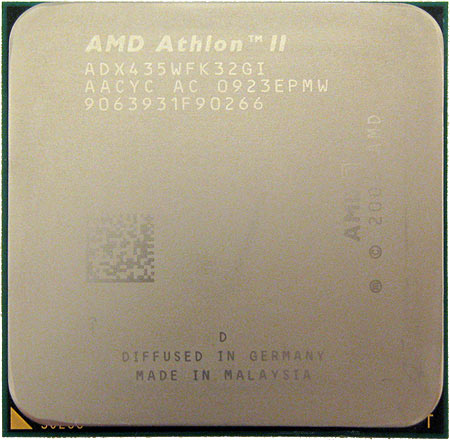Six New Athlon II CPUs: AMD Impresses With Switch And Bait
AMD turns the bait-and-switch tactic upside down for the second time in four months, offering faster CPUs at existing price points. We explore the company's seven new models and discuss the processor lineup in a more general manner.
Conclusion
We're fans of upgradable platforms. We're fans of procuring lots of performance without spending a ton of money. And we recognize that a majority of high-dollar processors are entirely overkill for a majority of PC users (even power users). To that end, AMD has done an admirable job of addressing a majority of end-users with price points under $200. Specifically, this Athlon II revamp bodes well for anyone looking for a much-needed Socket AM2+/AM3 upgrade.
Don't get me wrong, I'm also an enthusiast. That means I'm a fan of high-performance enthusiast-class hardware that costs a premium, but also sets new performance records. When it comes to video editing, gaming rigs with three or four graphics cards, and transcoding, Intel's high-end offerings absolutely rule the roost. The company has an undeniable technology advantage over AMD in the high-end LGA 1366 space, and even the fastest LGA 1156-based CPUs are compelling.
More than likely, AMD's answers to Intel over the next six months will include new Athlon IIs and Thuban-based Phenom II introductions (Update: AMD let us know that quad-core Zosma-based Phenom II X4 960T engineering samples have been manufactured, but the company does not expect that this processor will be released for general availability. It remains to be seen if the 960T makes its way to OEMs by special request). AMD's roadmaps suggest that next year will see an eight-core CPU based on the new Bulldozer architecture, but the potential game changer is Fusion. This is AMD's upcoming combination of CPU and graphics processor (codenamed llano), supposedly sampling now, to be released in 2011. Information from AMD suggests that llano's integrated graphics core may perform on par with the discrete Radeon HD 5570. This is very, very powerful for an integrated part and may truly bring 1680x1050 gaming to the masses.
For now, the vast majority of users out there--users surfing the Web, editing documents, presenting PowerPoint presentations, and gaming on low-budget PCs--really see no measurable benefit from a CPU faster than an Athlon II X3 or X4. AMD's sub-$100 CPUs are able to cover the needs of most folks, we think, and will continue to do so until there is a big shift in the PC desktop landscape.
Of course, this is one man's opinion, and it's easy to argue with subjective conjecture. Keep an eye out for a AMD versus Intel budget processor comparison coming in the near future. This is something we would have liked to have had for today's announcement, but a couple of recent developments have us cranking on some exciting new technologies. Stay tuned; it's an exciting month in the Tom's Hardware labs.
Get Tom's Hardware's best news and in-depth reviews, straight to your inbox.
Don Woligroski was a former senior hardware editor for Tom's Hardware. He has covered a wide range of PC hardware topics, including CPUs, GPUs, system building, and emerging technologies.
-
zehpavora What I could get from this was that AMD sells a long lasting processor (its technology is in the market for some time) for less money. Since this processor has a history, it performs in a very bad way compared to Intel's same level processors.Reply
However, to keep everything at lower prices, AMD bumps the core speed a little so you still use older technology, but it's faster.
Don't get me wrong, I rather use more money to buy a state of the art processor than buying something that is technologically old for a good price. Why? Because there is no point in saving money to perform less.
I'm not a fanboy. I'm just stating the things I think and the things I could get from the article. If people needed a "faster core" like that, they could easily get a overclock. Even though a lot of people don't know what it is...
In the budget side, AMD has the crown. But it is still under Intel's shadow in the performance showdown. -
babybeluga "I'm have two statements to make"Reply
You're kidding...first sentence of the entire article...
-
Dekasav So, zehpavora, you run the $1K 980X, right? 'Cause, there's no point in saving money to perform less.Reply -
flyinfinni There are a number of mistakes in the clock speeds, but thats ok- I'm just happy they keep releasing faster CPU's for the same price as the older ones! :-)Reply
